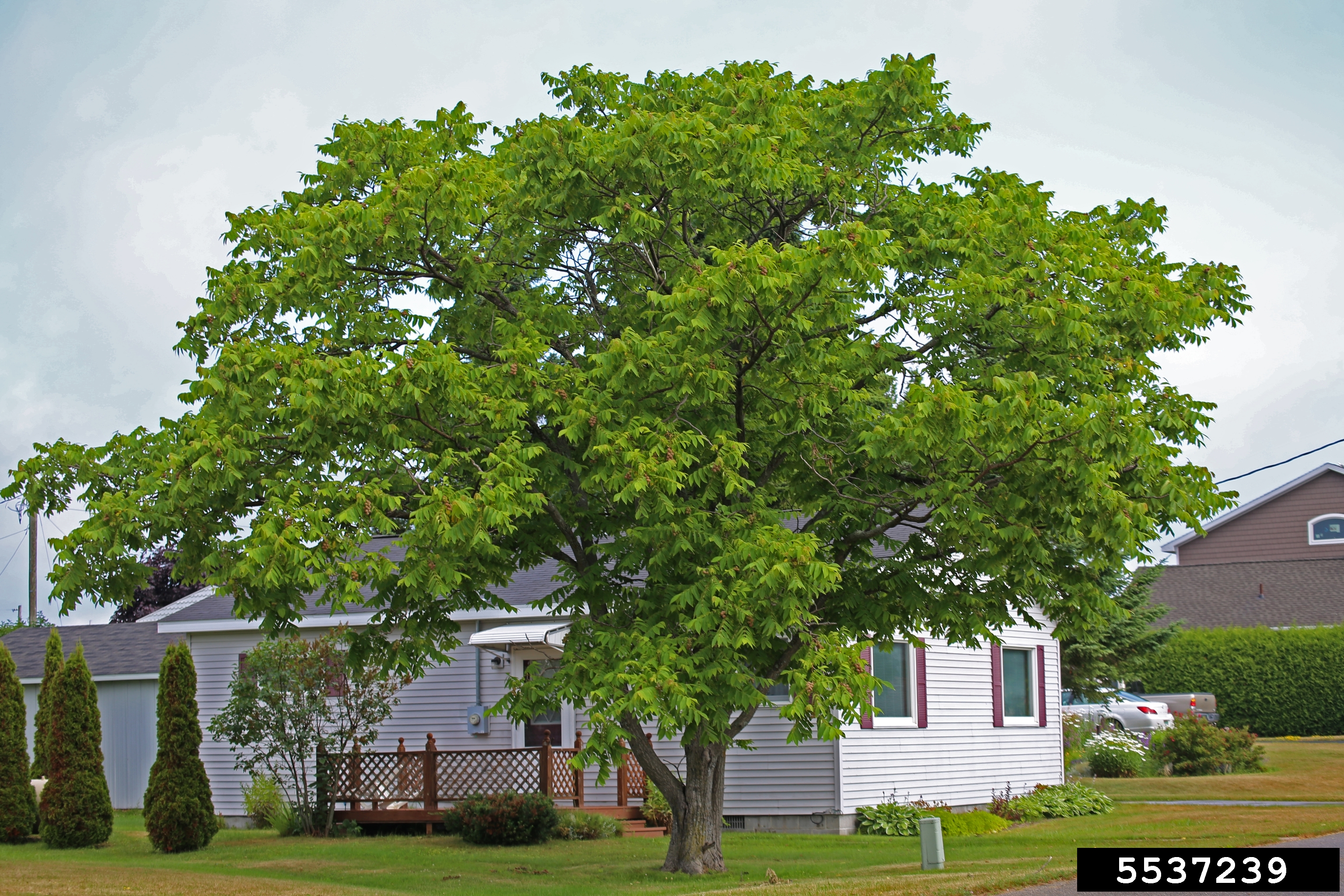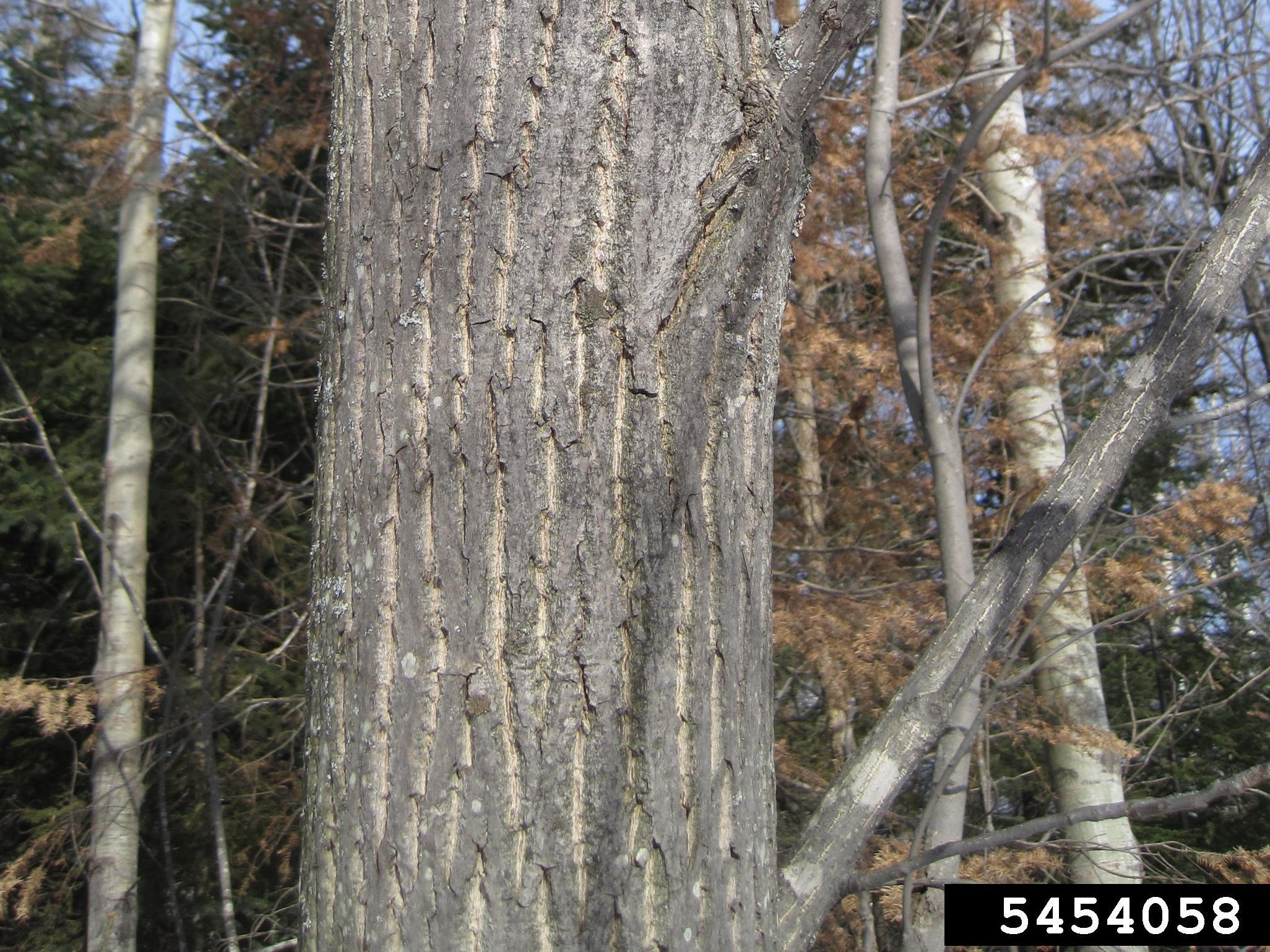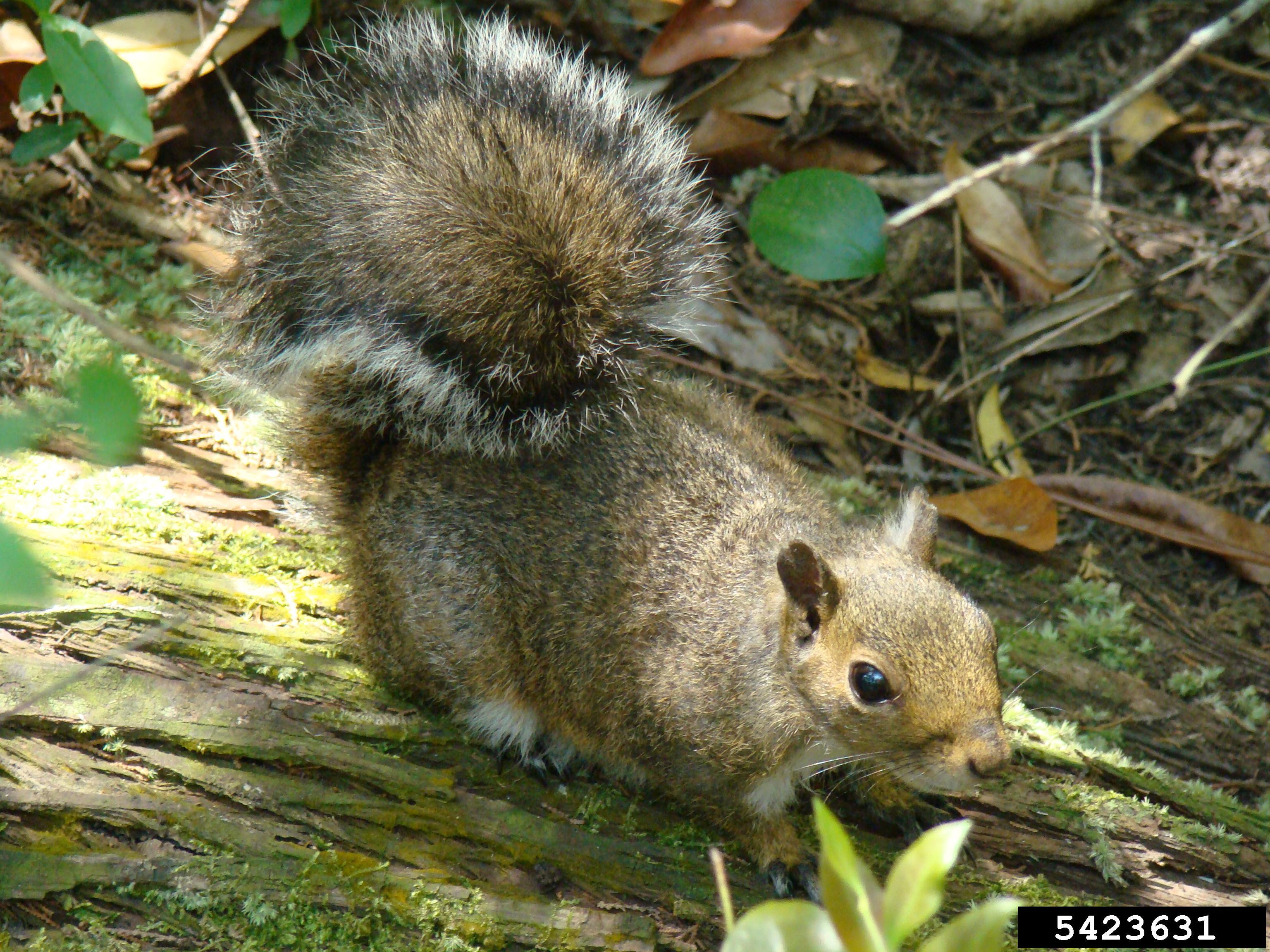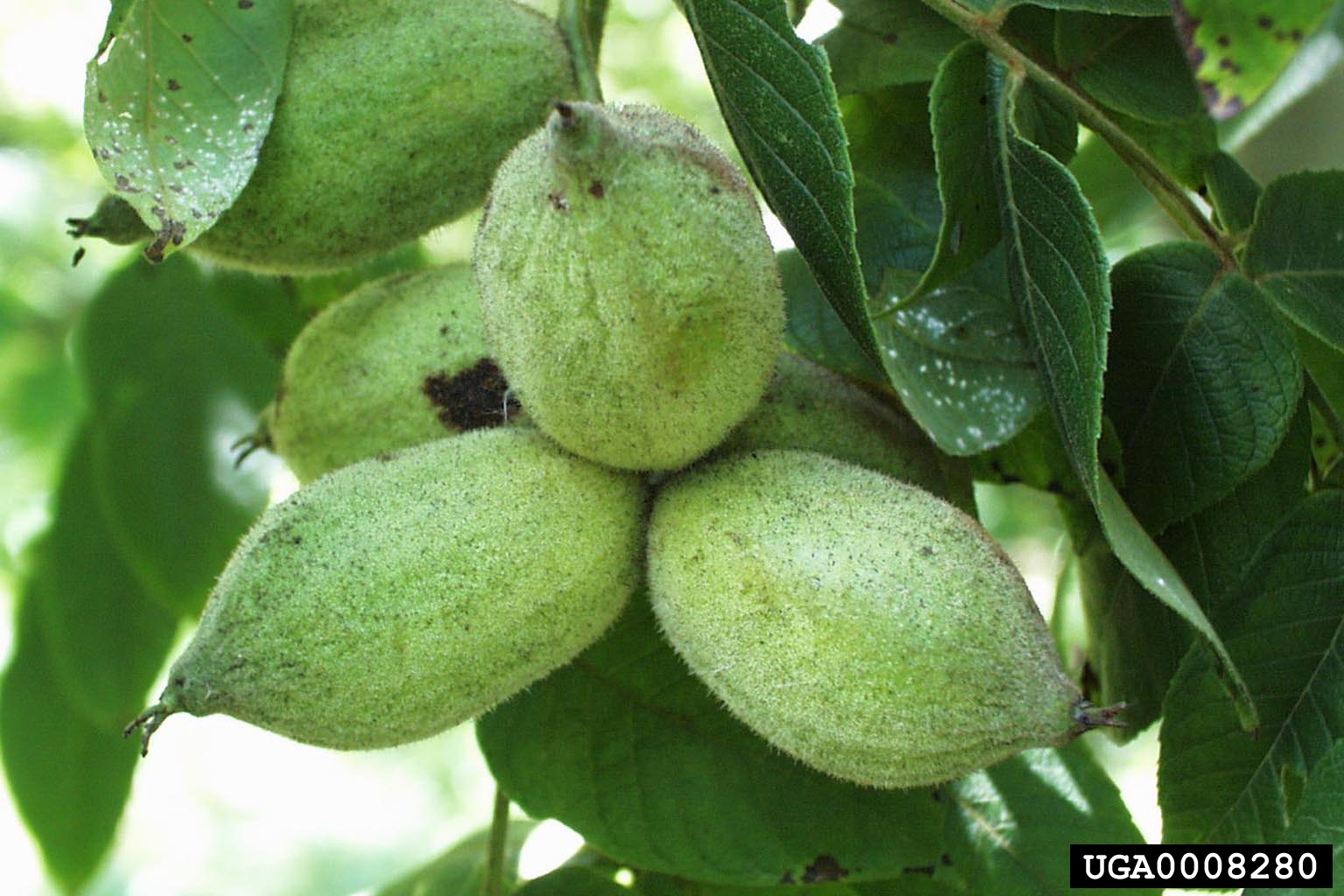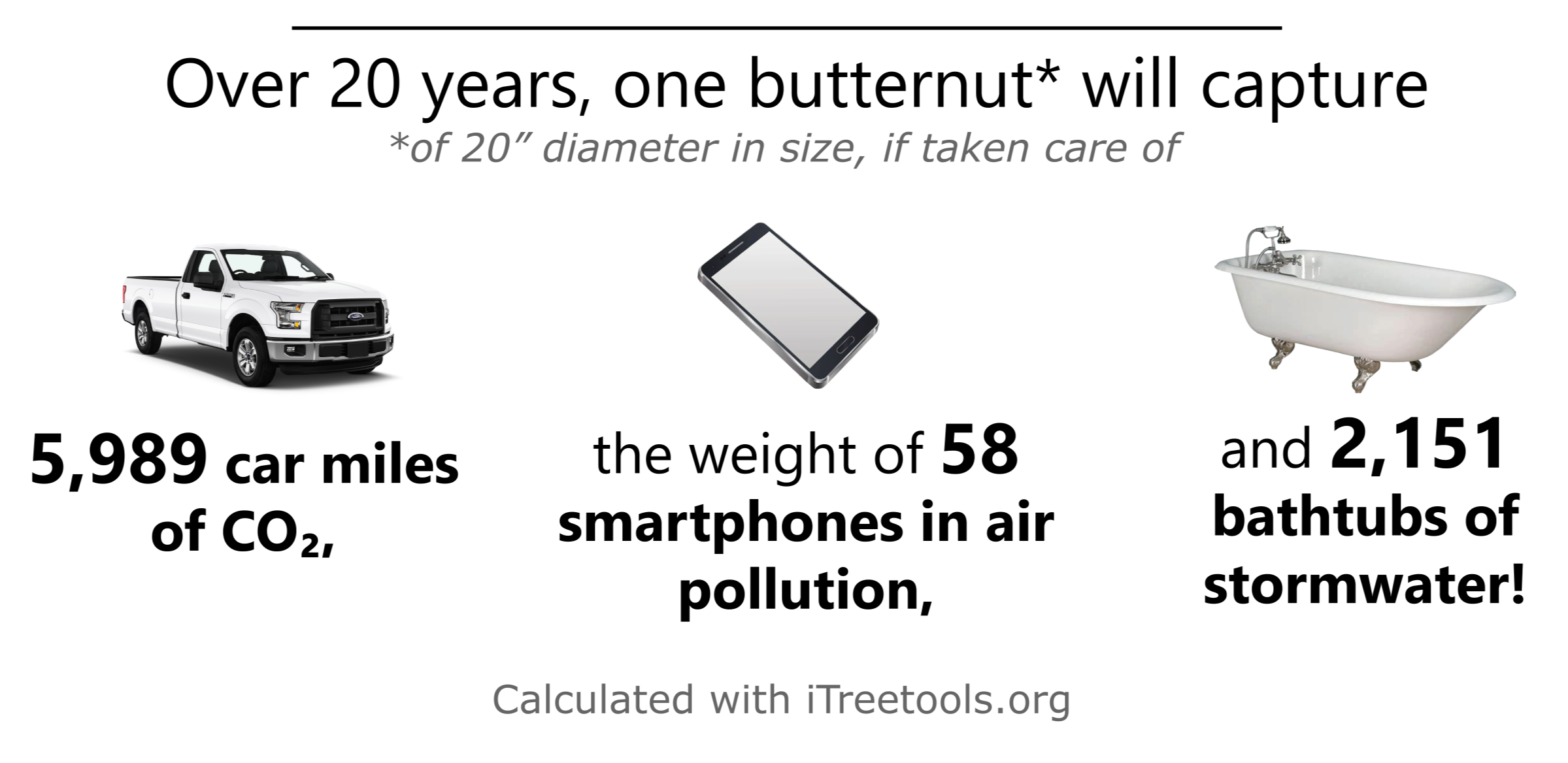Tree Highlight: Butternut
Butternut
Juglans cinerea (Family Juglandaceae)
The rare butternut tree
The basics
Butternut (Juglans cinerea) is a species of walnut tree native to the eastern United States and southeast Canada. Butternut, also known as white walnut, is differentiated from the black walnut because of its characteristic light gray bark and the oblong shape of the green nut husks. The nuts are edible and have a rich flavor and dense protein content! The butternut tree looks similar to the black walnut: click here to learn how to distinguish the two species. Unfortunately, the butternut is threatened by a fungal disease called butternut canker that is killing many trees in its native range, making this tree a rare find. Learn more about the butternut canker here.
Did you know?
- Butternut trees can grow up to 60 feet.
- The scientific name describes the trees’ appearance. In Latin, Juglans means “nut,” referring to the oily sweet butternuts, and cinerea means “ash-like,” referring to the color of the bark.
- Another way to distinguish butternut from black walnut is the shape of the fruit. Butternuts are football-shaped and black walnuts are rounded.
The light gray bark of the butternut tree
Squirrels plant new butternut trees when they don't return to the nuts they have stored in the ground!
Wildlife
- Squirrels are probably the biggest fans of butternut trees. They often store them for winter, and uneaten nuts grow into new butternut trees.
- Woodpeckers and other birds eat insects living in the tree bark and snack on the butternuts.
- Deer nibble on the leaves and twigs, especially in the spring when foliage is fresh and green.
- Many insects, like beetles and caterpillars, live on butternuts. These insects are important because they help break down dead wood and leaves.
Uses
- Butternuts are not just for animals; humans can eat them too! They have a sweet oily taste and are packed with vitamins and nutrients. You can eat them raw or use them in a recipe!
- The oil in butternuts can be used in cooking, as these healthy fats can help keep your body strong.
- Indigenous peoples used different parts of the butternut for medicine.
- Butternut wood is soft and easy to carve, making it perfect for furniture use.
Benefits
- Over a 20-year period, a healthy butternut with a diameter of 20 inches will offset 5,989 car miles worth of CO2, absorb enough stormwater to fill 2,151 bathtubs, and remove an amount of pollution from the air – in gaseous and particulate form – equivalent in weight to 58 smartphones! Learn more at: https://mytree.itreetools.org/
Contact us: ufi@uky.edu
Images sourced from forestyimages.org
